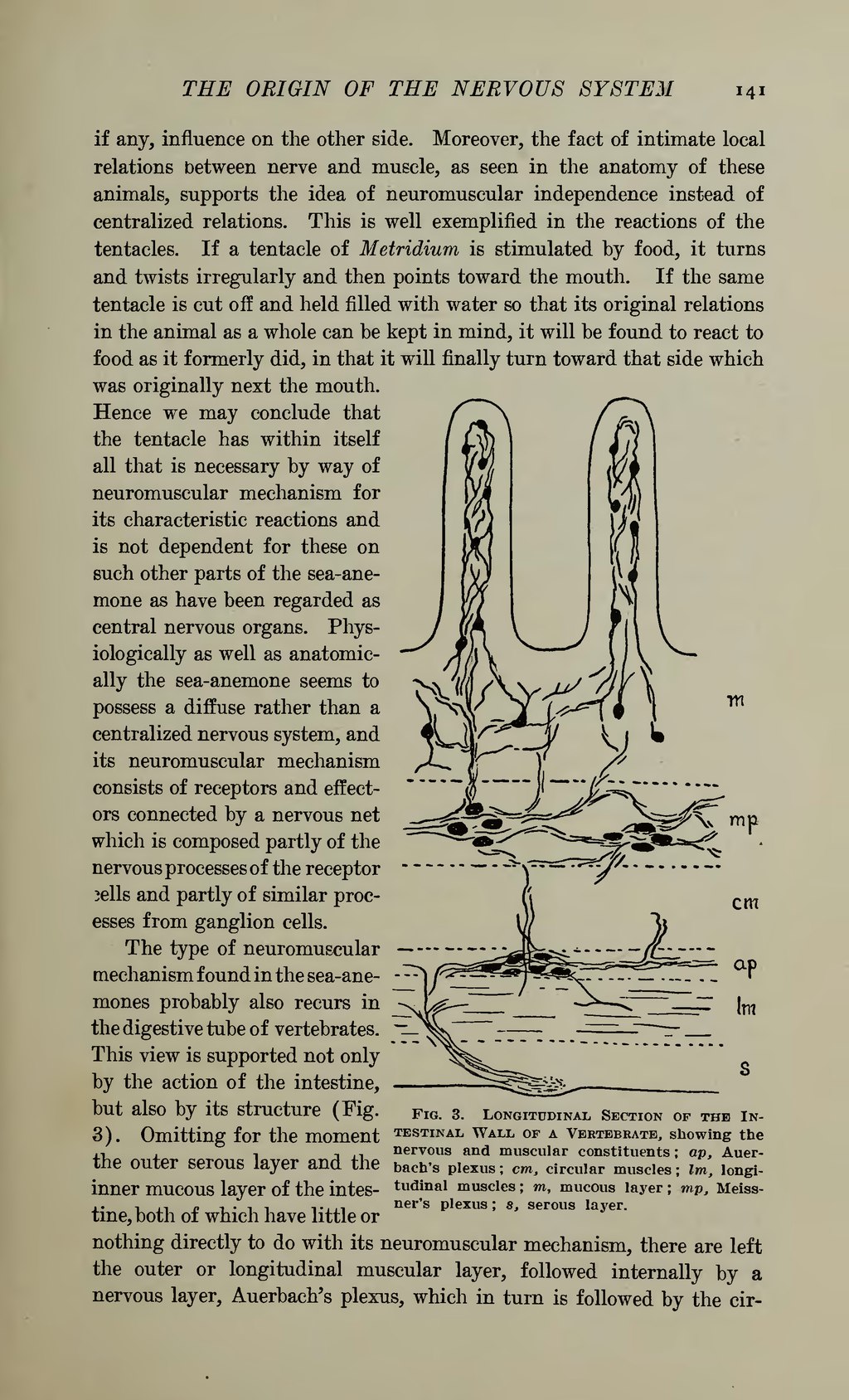if any, influence on the other side. Moreover, the fact of intimate local relations between nerve and muscle, as seen in the anatomy of these animals, supports the idea of neuromuscular independence instead of centralized relations. This is well exemplified in the reactions of the tentacles. If a tentacle of Metridium is stimulated by food, it turns and twists irregularly and then points toward the mouth. If the same tentacle is cut off and held filled with water so that its original relations in the animal as a whole can be kept in mind, it will be found to react to food as it formerly did, in that it will finally turn toward that side which was originally next the mouth.  Fig. 3. Longitudinal Section of the Intestinal Wall of a Vertebrate, showing the nervous and muscular constituents; ap, Auerbach's plexus; cm, circular muscles; lm, longitudinal muscles; m, mucous layer; mp, Meissner's plexus; s, serous layer. Hence we may conclude that the tentacle has within itself all that is necessary by way of neuromuscular mechanism for its characteristic reactions and is not dependent for these on such other parts of the sea-anemone as have been regarded as central nervous organs. Physiologically as well as anatomically the sea-anemone seems to possess a diffuse rather than a centralized nervous system, and its neuromuscular mechanism consists of receptors and effectors connected by a nervous net which is composed partly of the nervous processes of the receptor cells and partly of similar processes from ganglion cells.
Fig. 3. Longitudinal Section of the Intestinal Wall of a Vertebrate, showing the nervous and muscular constituents; ap, Auerbach's plexus; cm, circular muscles; lm, longitudinal muscles; m, mucous layer; mp, Meissner's plexus; s, serous layer. Hence we may conclude that the tentacle has within itself all that is necessary by way of neuromuscular mechanism for its characteristic reactions and is not dependent for these on such other parts of the sea-anemone as have been regarded as central nervous organs. Physiologically as well as anatomically the sea-anemone seems to possess a diffuse rather than a centralized nervous system, and its neuromuscular mechanism consists of receptors and effectors connected by a nervous net which is composed partly of the nervous processes of the receptor cells and partly of similar processes from ganglion cells.
The type of neuromuscular mechanism found in the sea-anemones probably also recurs in the digestive tube of vertebrates. This view is supported not only by the action of the intestine, but also by its structure (Fig. 3). Omitting for the moment the outer serous layer and the inner mucous layer of the intestine, both of which have little or nothing directly to do with its neuromuscular mechanism, there are left the outer or longitudinal muscular layer, followed internally by a nervous layer, Auerbach's plexus, which in turn is followed by the cir-
